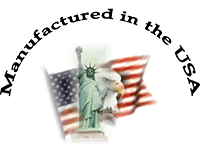
|
The CVT Story:by: Jack Parker 1987Hand laying H-O track may not be dead! We are betting that it will be re-discovered in a big way with this new product. Central Valley Ties are the first major new track product in decades. It has been made form first-hand experience of the H-O track laying techniques of nearly 50 years. Ideas and features from the first fiber tie strip to the latest, but not so new, molded pre-fab flexible track have been examined. The best of all this is now available in CVT, plus a couple of new ideas thrown in. At first glance it might look like a step backwards. It falls into the category of "Hand Laid". But that's where it stops. From that point on it's better track than ever before. We've looked at'em all - some you may have forgotten: Varney, Mantua, Tru Scale, Kappler, and more. There's track from the U.K., and Europe and yet there is still room for a truly better track system for the scale model railroader. CVT is injection molded with wood grain, scale tie plate, and spike detail. It is extremely flexible and easily spiked. It is self-gauging with code 70 and code 83 rail. It is available in two (2) distinct styles, CVT #2001 for mainline and CVT #2002 for sidings, branch or period trackage. It is easily curved to even traction sized radii, and, CVT is moderately priced. The ties come attached to the sprue to protect them during shipping and handling. They are easily removed from the sprue with scissors. For more fun try a pizza cutter! Let me give you a little background on the reasons for its development. During the construction of my 15' X 26' H-O layout in Los Angeles, I came to several conclusions, but mainly, that there must be a better way to put H-O scale track down. That layout was mostly hand-laid fine nickel-silver rail on pre-cut wood ties. I had considered molded flexible track, but the combination of rail sizes and tie styles available and the code 100 was simply too gross for my taste. I did use the economical code 100 flexible track on hidden trackage. To call this material "flexible" is some-what misleading. Formable maybe, but not flexible. To form smooth, accurate radii is next to impossible. When a semblance of a curve is finally achieved, joining the two pieces together for a continuing smooth radius through the section of damaged, skewed, and missing ties is absolutely beyond reason. I found the same problems with other types of "flexible" pre- fabbed track products. The pre-fabbed track was the least reliable on the railroad due to the poor joints. To make matters worse, as I stated, this track was used in hidden areas under scenery and exposed trackage, making trouble- shooting and re-railing a nightmare. Back to hand laying. First the ties were stained. I then commandeered my children to sit, jig, and tape the ties into strips. After the roadbed was prepared, the ties were glued down trying to follow a pencil line for centering. The tape really didn't adjust to the curves that well (It started out flat and straight). Occasionally the enslaved help didn't get a few ties taped just right and in trying to squiggle those ties around in the glue, sometimes 12" or 14" of taped ties would be dangling from my elbow or finger-tips. Finally, the ties were in place and left to dry under a bed of ballast spread over the top. A day or two later the excess ballast was removed and things looked pretty good, so rail laying began. The first few feet of rail went down and I went back and started laying the second rail. Gauging went pretty well, although it started getting a little tricky in the first curve. Then I sighted the first few feet of track and I was horrified! It was very kinky - wandered from spiked tie to spiked tie. By tapping the spikes this way and that - then re-gauging the opposite rail with the same tapping, the trackage started to smooth out, but then a new demon appeared! This class1 mainline trackage was like a roller coaster! Although the sub-base and roadbed was sturdily and precisely built of plywood's and pine, all carefully block sanded, the rails were noticeably out of vertical alignment. I had tested various materials for roadbed, and found that the various Homa-stuffs, wallboards, corks or cardboard's (foam core not invented yet) were not sandable enough, consistent enough, or hard enough to maintain solid level spiked track. The best material was clear white pine (costly) and the second choice was 1/4" lauan Philippine mahogany plywood. I used both. The roadbed was fine. The culprits were the "precision" wood ties. The rails were removed and the ties were block sanded. During this operation, many of the high ties were snagged and had to be re-glued and re-sanded. After block sanding the ties, the top surfaces were re-stained by lightly wiping the surfaces with a stain-soaked bit of cloth. Rail laying was resumed and things were going better, but the rail would still kink during an alignment or gauge adjustment. The ties would compress when slightly too much pressure was used, re-creating the problem with the un-sanded ties. Finally, the skills improved, and with a "draw filing" of the railhead, the track improved. Other problems were, that to maintain smooth rail joints, easements, and transitions, the rails would not be centered on the ties. Whereas, by now the track worked pretty well, to my eye, it was "off," literally off center. When summer came, much of the hand laid went out of gauge between spikes. Spiking was increased to about every fourth tie or 1 inch spaces. Expansion gaps were cut in, the rails were de-kinked again, and re-filed. The track was now touted as some of the best around. Fifty car trains were running reliably and there were moments of happiness and pride of accomplishment. The mainline had been laid with code 83 and the branch line and yards with code 70 and 55. It really looked pretty good, but when no one was around I agonized over the fact I had failed to provide my tie taping crew with 2 spacing jigs to create the difference between mainline and branch line. Finally, I had a railroad representing a class 1 heavy steam, first generation diesel, high speed, super elevated, heavily railed mainline, that must have been laid in the 1870's! I didn't have a tie-plate one! All of that work for a result that still fell way short. When it came time to move from Los Angeles, my friends were dumbfounded when that railroad was dismantled in 4 hours. With wrecking bar, sledge and carbide tipped saw, the layout vanished literally into a cloud of dust. No one could understand why I had a smile on my face, but in my mind the "new layout" was already taking form. Many things would be better firstly the track. CVT borrows from the old, we added some new things and it is here now. Having read the saga of my track laying on the old layout, consider these features:
Thank you for visiting
Central Valley Model Works, Inc. © 2004-2026 About us | Contact | Site Map | Terms of use |
|
||||||



